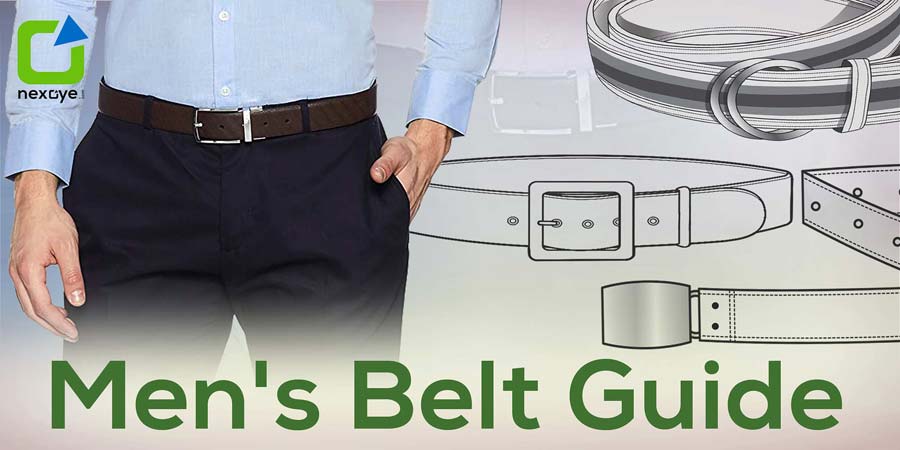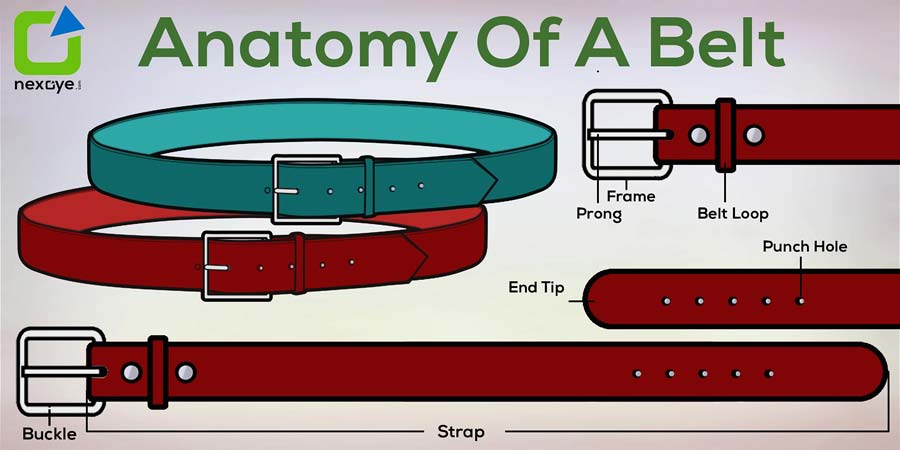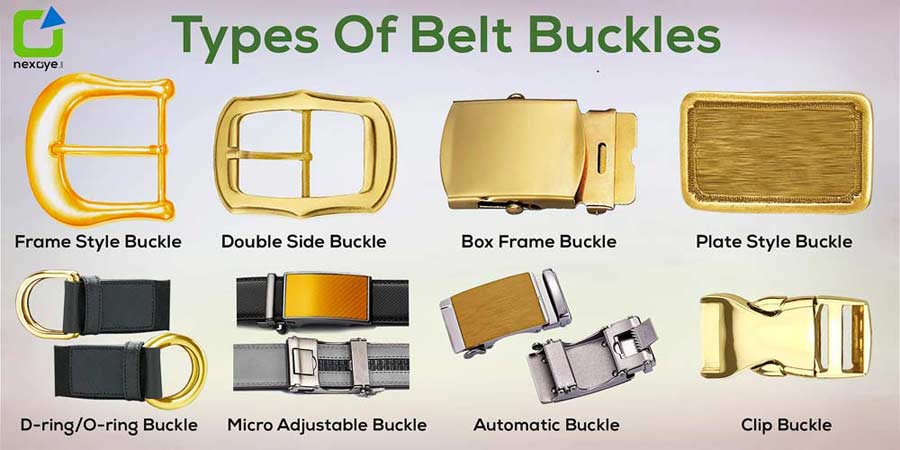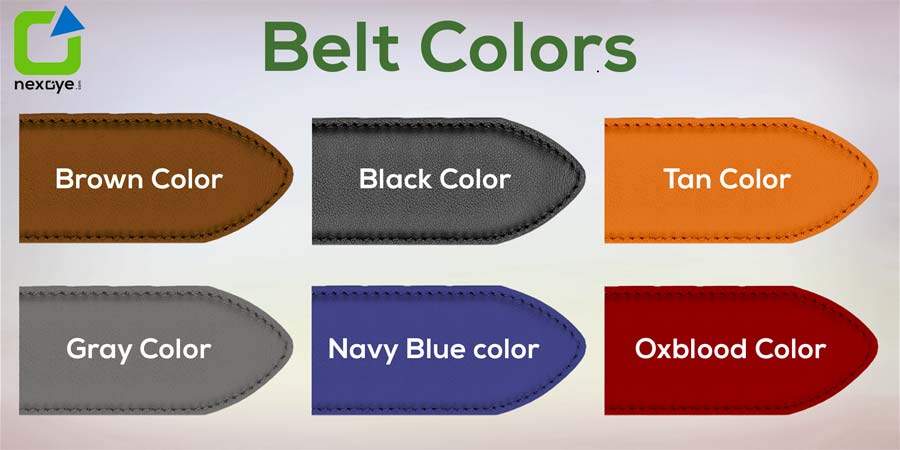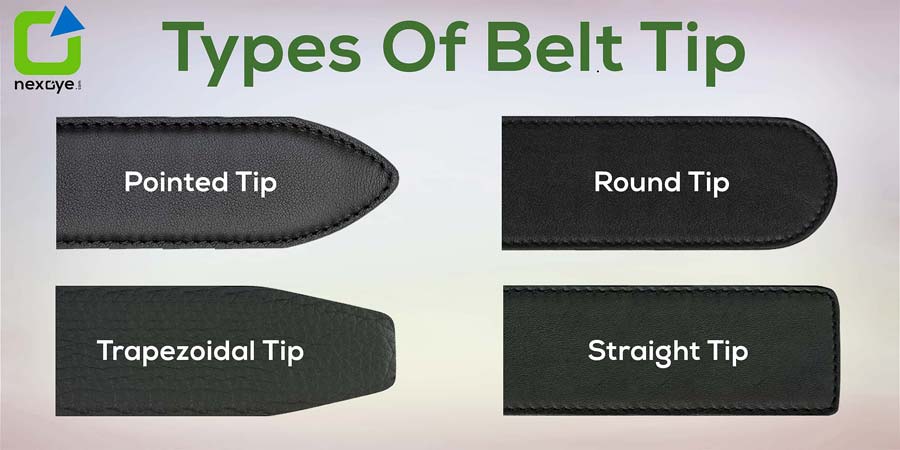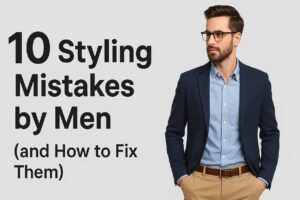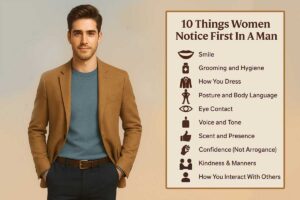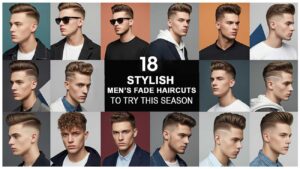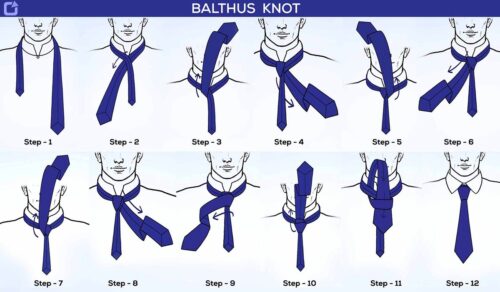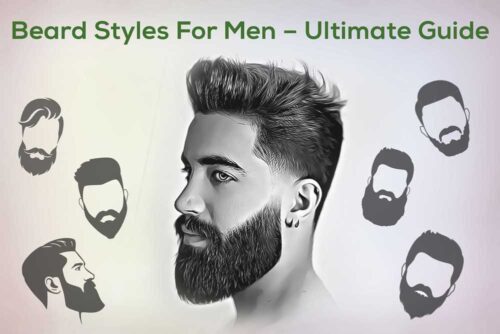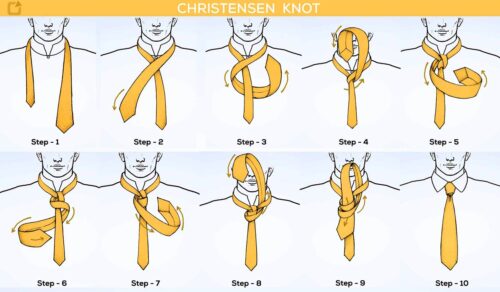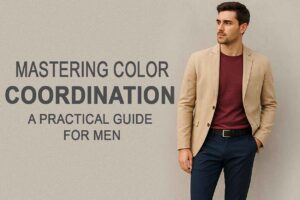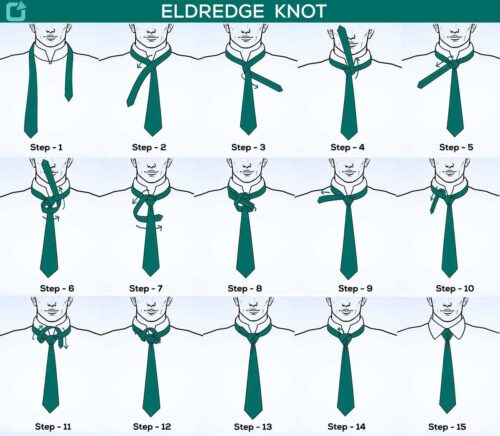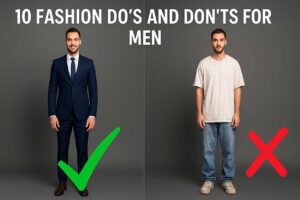Men’s Belt Guide | Best Belts For Men | Belt For Men | Types Of Belts | Leather Belt For Men | How to Buy a Men’s Belt – The Ultimate Guide
Men’s Belt Guide: Every man wants to look perfect and complete. They want people to notice their style or even take tips from them. Smart men share certain qualities that make them look attractive. But what truly sets a man apart is his attention to the smallest details. Fashion experts emphasize that belts play an essential role in every wardrobe. A belt does more than just hold your pants at the waist—it also helps define and separate your upper body from your lower body, enhancing your overall look.
Why do you need a belt?
A man looks stylish and perfect when he chooses clothes that suit his body and pairs them with the right type of belt. A belt is a classic men’s accessory and a symbol of a well-dressed man. Wearing the wrong belt, however, draws unwanted attention and can make you feel uncomfortable and self-conscious.
Link For Covering Topics Men’s Belt Guide.
- What is a belt?
- What are the basic types of belts?
- Anatomy of a belt
- Types Of Belt Buckles
- Belt Strap Materials
- Types Of Belt Width
- Belt Stitching Patterns
- Belt Color And How To Match Your Belt With Color Combinations
- Types Of Belt Tip
- Belt Size Chart Mens
- Conclusion: How To Dress With A Belt for Men
- Leather Belt Care
What is a belt?
Belts are used in a variety of ways, but today we will discuss accessories in men’s clothing. A belt is a flexible band or strap, usually made of leather, plastic, or heavy fabric. which is naturally worn around or near the waist. The ends of a belt are free, and a buckle secures one end of the belt to the other end or near the other end to make the belt loop.
Men’s Belt Guide most logical Question: What are the basic types of belts?
There are two basic types of belts: formal belts and casual belts.
Formal Belts – When you wear a formal leather belt, you instantly add a stylish and sophisticated touch to your outfit. Leather belts never go out of style and pair perfectly with formal attire like suits and trousers. Always choose your belt based on your outfit, the occasion, and your specific needs. Wearing a jeans belt with formal clothing creates a mismatch and doesn’t leave a good impression.
Casual Belts – People usually wear casual belts with jeans, chinos, or sport slacks. These belts are specifically designed to match casual outfits. They come in a wide variety of materials, shapes, buckles, colors, and styles. Casual belts offer more variety than formal ones. Their finish is typically flat and subtle, making them perfect for relaxed, everyday looks.
Anatomy Of A Belt
As mentioned earlier, a belt is a flexible band or strap, typically made from leather, plastic, or heavy fabric. Most belts include two main components:
1. Buckle
2. Strap (also called a “lease”)
Many belts also feature a keeper loop and an end tip. Some belts have a metal end tip, while others use leather or fabric for styling. The end tip protects the belt’s edge and makes buckling easier. Once buckled, the keeper loop holds the free end in place to prevent it from flapping.
In some designs, manufacturers permanently attach the buckle to the strap. Others allow users to detach or switch the buckle for versatility. The part of the buckle that connects to the strap is called the chap. You’ll find a wide variety of belt designs with such features.
Types Of Belt Buckles
Earlier, only two or three buckle designs were popular. But now, in this fashion-forward era, the market offers a wide variety of buckle styles. If we categorize the main types, we get nine distinct buckle designs. These form the core of my Men’s Belt Buckle Guide.
- Frame Style Buckle
- Double Side Buckle
- Box Frame Buckle
- Box Out Buckle
- Plate Style Buckle
- D-ring/O-ring Buckle
- Micro Adjustable Buckle
- Automatic Buckle
- Clip Buckle
Frame Style Buckle:
You’ll find this buckle style on most formal belts and even on many casual ones. The strap passes through the frame, and when you fasten the belt, the prong fits into a hole on the strap to secure it.
There are three main types of frame-style buckles: Screw Closure Buckle, Clamp Closure Buckle, and Stitch Closure Buckle.
Double Side Buckle:
This buckle is designed for double-sided belts, the opposite of single-sided ones. It gives the belt a unique reversible look, allowing the wearer to style it with just one twist. Double-side buckles are always used with casual belts and enhance the overall outfit effortlessly.
Box Frame Buckle:
This buckle resembles a small metal box with a hollow center and an open end. The strap presses against the inside of the box to hold it in place, so there’s no need for holes in the strap. It’s sleek, practical, and has a modern appeal.
Box Out Buckle:
This buckle features a simple frame made of leather or synthetic material. It’s lightweight and less durable, making it more popular in women’s fashion. It’s mostly used as a decorative accessory rather than for function.
Plate Style Buckle: This buckle typically pairs with detachable snap belts and is also referred to as a strap without a buckle. The plate is often decorated. Cowboys and bikers commonly wear this type of belt. The hook in the belt passes through the front of the strap, adding the throw (the distance from the chap to the hook) to the belt’s overall length.
D-ring/O-ring Buckle: This buckle consists of one or two rings that form the buckle. You fasten the belt by threading it through the rings. It is commonly used with casual, braided, webbing, and canvas belts.
Micro Adjustable Buckle: This buckle uses a ratchet-style track system that requires a special strap. A metal piece presses the ‘teeth’ of the track into the strap. This type of belt doesn’t need holes and allows for quick adjustments.
Automatic Buckle: The automatic buckle offers comfort, which is why people choose belts with this type of buckle for convenience. Many automatic buckles are available, designed with different strap types. Some include Auto Press Buckle, Auto Grip Buckle, Auto Lock Buckle, Automatic Latch Buckle, and Automatic Locking Splice Buckle.
Clip Buckle: There are two main types of clip buckles: 1) the clip-on buckle, and 2) the clip-latch buckle. With the clip-on buckle, you can snap off the belt by sliding the tail end through the loop on the back of the buckle to secure it. The clip-latch buckle works by inserting the protuberance at one end of the belt into the other end and closing the buckle to secure it.
Belt Strap Materials
When choosing belt strap material, durability is a key factor. The most commonly used leathers come from cows, buffaloes, sheep, and goats. These leathers make beautiful and long-lasting belts. Calf leather, made from young cows, is especially soft and expensive. Cow leather, on the other hand, comes in various forms, patterns, sizes, and colors, suitable for both dress and casual belts.
Men’s Belt Guide to Belt Strap Materials
FULL-GRAIN LEATHER
Full-grain leather is the highest quality grade of leather. It features the toughest leather top and retains all natural grain. When made from calfskin, this leather is the softest and is used in high-quality formal belts. Manufacturers find it expensive to source and challenging to work with, which reflects its higher cost for consumers.
TOOLED LEATHER
Tooling and embossing are common techniques in the leather industry. Tooled leather is decorated through a stamping process that creates patterns, often resembling a painting or 3D design on the surface. The intricate craftsmanship of tooling is evident upon closer inspection.
BRAIDED LEATHER
Braided leather belts feature a distinct design where leather strips are woven together, making the belt soft and flexible. These belts typically use frame-style buckles, and you can place the prong in any hole in the braid. Braided leather belts are also easily adjustable, as they can be cut to different sizes using the same weaving technique.
SUEDE LEATHER
Suede leather is a high-quality, soft leather made from the underside of animal skins, such as goat, calf, and lamb. Although it comes from thicker skins of larger animals like cows and buffaloes, suede lacks a hard outer skin layer, making it softer but less durable than full-grain leather. Its thinness, softness, and flexibility give it a fabric-like feel.
EXOTIC LEATHER
Exotic leathers, while typically casual, can also be styled formally when kept subtle with dark colors like black. Ostrich, lizard, crocodile, python, and alligator belts feature unique patterns and textures that are highly recognizable and fetch a higher price.
Other materials, such as leather-backed ribbons, webbing, canvas, vinyl, and rope, are also used to make belts, each contributing special qualities and features to the design.
Types Of Belt Width
Men’s Belt Guide to Types Of Belt Width – Men’s belts come in the largest variety of width options, and they come in various widths that we have categorized below.
- 5cm/1inch, this is the width of the casual belt.
- 3cm/1.2inch and 2cm/1.3inch, this classic belt width.
- 5cm/1.4 Inch Similar Width Belt Multipurpose.
- 4cm/1.6 inch Such Width Belt Jeans.
Belt Stitching Patterns
Men’s Belt Guide to Belt Stitching Patterns
Leather belts now come in a wide variety of stitching styles. In today’s fashion era, designers enhance the appeal of leather belts by adding creative stitching patterns. Craftsmen commonly stitch along the borders using single, double, or triple stitching. To introduce even more style, they often revamp the entire belt strap with designs like cross-stitch patterns. These detailed stitching styles have become popular among people and are widely followed in fashion trends.
Belt Color And How To Match Your Belt With Color Combinations
When you wear a formal belt, pay close attention to color combinations. Choose classic leather belt colors like black or brown, but make sure to match the belt’s leather and metal details with your shoes and other accessories. Coordinate not just the color, but also the shine and finish. For casual summer looks, you can wear belts in a variety of colors such as brown, black, tan, gray, navy, oxblood, and white.
Types Of Belt Tip
Men’s Belt Guide to Types Of Belt Tip – Basically, there are 4 types of belt tip: Pointed, Round, Trapezoid, and Straight. Pointed and trapezoidal finishes are by far the most common and are especially popular with classic belts. And the straight tips are considered in the option of a modern look. And round finishes are rarely used in general.
Belt Size Chart Mens
How to Measure a Belt Size?
To get the right belt size, start by measuring your waist where your pants usually sit. Add 2 to 4 inches to this measurement for the perfect belt length. For example, if your waist measures 32 to 34 inches, choose a belt that is 36 to 38 inches long. These extra inches allow the belt to pass through the buckle and reach the first belt loop on the left side, which is considered the ideal fit.
How to Know Your Belt Size?
Manufacturers usually indicate belt sizes in inches, centimeters, or Roman numerals. This size refers to the length from the buckle to the middle hole of the belt, where it should ideally fasten.
Some branded companies follow a size system similar to readymade clothing, using labels like XS, S, M, L, and XL. These belts usually come with a waist range, such as 28″, 30″, 32″, 34″, 36″, or 38″, to help you choose the perfect fit easily.
We can understand all these from the table given below.
| SIZE | INCHES | CM |
|---|---|---|
| XS | 28-30 | 71-76 |
| S | 30-32 | 76-81 |
| M | 32-34 | 81-86 |
| L | 34-36 | 86-91 |
| XL | 36-38 | 91-96 |
Conclusion:
Men’s Belt Guide: How to Dress With a Belt
Most men own several types of belts, but I recommend keeping at least three essential ones: a formal belt, a casual belt, and a webbed fabric belt.
Dress with a Formal Belt
Wear a formal belt for business meetings or evening events. Choose a belt with a strap width between 1 to 1.5 inches in black or dark brown leather. Opt for a polished and shiny finish. Pick belts that are simple, short, and feature sleek, polished buckles. Match the belt’s leather and metal buckle with your shoes and accessories for a clean, coordinated look.
Dress with a Casual Belt
Pair a casual belt with jeans or relaxed trousers. Look for belts with a strap width between 3 cm (1.2 inches) and 3.2 cm (1.3 inches), often thicker than dress belts. Natural brown leather works well here. These belts often feature braided or matted textures and decorative buckles—like plate, box, or leather-framed buckles. You don’t need an exact color match, but go for tones like brown or off-white with subtle brown shades.
Dress with a Webbed Fabric Belt
Wear a webbed fabric belt for casual summer outfits. These belts typically have a 1.5-inch strap and come in various colors and patterns. They usually feature a double D-ring buckle and look great with chinos or shorts, adding a relaxed yet stylish touch to your outfit.
Men’s Belt Guide: Leather Belt Care
How To Leather Belt care? To clean the belt One must first know how dirty the belt is if the belt is only dirty, scraped, or is very dirty, and or is a dry belt. Sometimes more or less needs to be done when it comes to cleaning and caring for a leather belt. So be careful not to overdo it as belt leather is naturally tough and flexible.
- If your belt is just dirty, clean your belt with a soft cotton cloth and very little hot water.
- If your belt is very dirty, then you can use a leather cleaner. This will clean the belt but will also remove essential oils, so use a belt conditioner afterward or your belt will dry out and risk breaking.
- Now if your belt is dry, use a very small amount of conditioner (like Lexol) on the leather. Apply it with a small cotton rag. You then leave it on for 10-15 minutes, and wipe off the residue on the remaining belt.
- If you have a scrap in your belt, it will often get scraped in your belt by friction. To remove it, the bandage is quenched with oil. This is less of an aesthetic issue for a casual belt than a formal belt.
GADGETS
Body Mass Index Calculator
Ideal Body Weight Calculator
Body Fat Percentage Calculator
